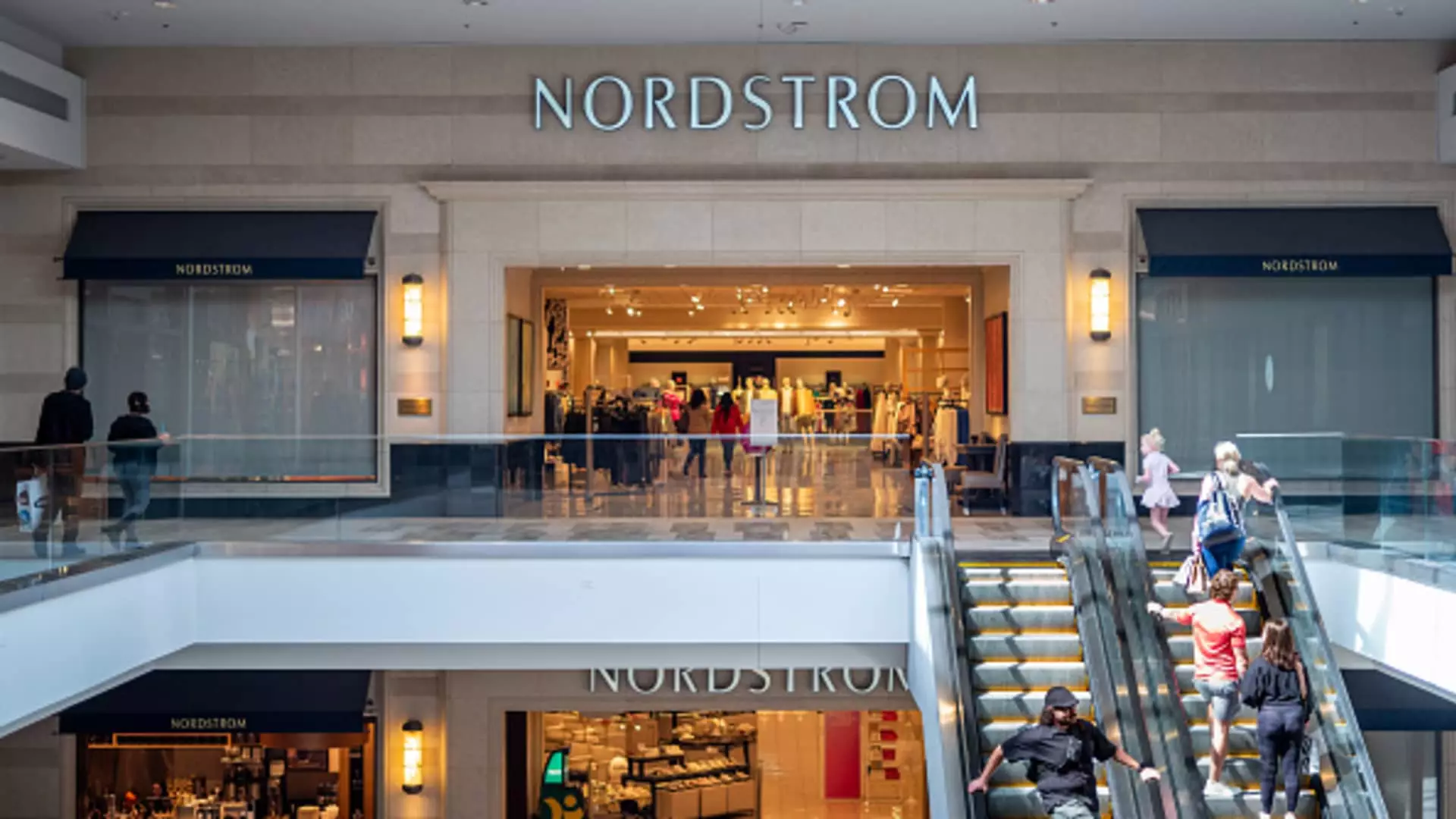Nordstrom, the renowned Seattle-based retailer, is making headlines with its recent adjustments to sales expectations, indicating a more optimistic trajectory than previously anticipated. The company reported stronger-than-expected performance during the holiday shopping season across both its physical and online platforms. This renewal of confidence comes after a cautiously conservative outlook projected just a month prior, demonstrating the complexities retail businesses face in times of fluctuating consumer confidence and economic uncertainty.
On Friday, Nordstrom announced a revision of its revenue growth projections for the fiscal year, now estimating an increase between 1.5% to 2.5%. This upward adjustment is especially noteworthy considering it reflects underlying strength in consumer spending behavior during the holiday shopping period, a crucial time for retailers. Previously, the guidance was set to reflect either stable revenue or marginal growth, topping out at 1%. The revision indicates not only an alignment with actual sales trends but also a strategic response to the competitive promotional landscape that has characterized the retail sector.
Breaking down the sales figures provides valuable insights into the company’s performance. For the holiday period ending January 4, Nordstrom reported a net sales increase of 4.9% and comparable sales up by 5.8%. This is an impressive feat, especially as it counters earlier comments from CEO Erik Nordstrom, who had observed a decline in consumer spending patterns in late October. The resilience showcased during the holidays highlights Nordstrom’s adaptability and responsiveness to market conditions, suggesting a well-thought-out marketing and promotional strategy that resonated well with consumers.
Interestingly, performance varied between Nordstrom’s two main banners: the flagship Nordstrom stores and the Nordstrom Rack off-price segment. While net sales rose 3.7% and comparable sales 6.5% for the Nordstrom brand, the off-price Nordstrom Rack experienced even more robust growth, with net sales increasing 7.4% and comparable sales at 4.3%. Such discrepancies between the two formats reveal shifting consumer behaviors, where budget-conscious shoppers may increasingly favor off-price retailers during challenging economic times.
Nordstrom’s results provide a broader perspective on retail health as they intersect with major players like Walmart, Macy’s, and Best Buy, all of whom are preparing to disclose their own earnings shortly. The performance of these giants will offer pivotal insights into consumer confidence and spending across various income levels. Recent data from Adobe Analytics highlights an almost 9% increase in online spending, totaling $241.4 billion during the holiday season, suggesting that consumers are increasingly pivoting to online channels for their shopping needs.
Moreover, Mastercard SpendingPulse reports a 3.8% increase in retail sales, excluding automotive, from November 1 to December 24 compared to the previous year. These metrics reinforce that despite economic uncertainties, some segments of the retail market are thriving, driven perhaps by strategic promotional efforts and an overall increase in online shopping preferences.
Adding further dimension to the company’s outlook is the recent announcement regarding a buyout deal involving the founding Nordstrom family and Mexican department store El Puerto de Liverpool, valued at approximately $6.25 billion. This move, poised for completion in early 2025, signals a shift in operational focus as the company gears up for a new private retail journey. Such a transformation could enhance their ability to navigate the competitive landscape and adapt strategies without the pressures of public scrutiny.
While Nordstrom has experienced challenges, the recent adjustments to its sales outlook reflect a keen understanding of market dynamics and consumer behavior. With a promising holiday season behind them and strategic corporate developments on the horizon, the retailer seems positioned to leverage its strengths moving forward. The forthcoming months will undoubtedly reflect how these strategies impact long-term growth and profitability in an ever-evolving retail environment. For consumers and investors alike, staying attuned to Nordstrom’s next steps will be crucial as the company navigates a future that promises to be both challenging and opportunistic.

